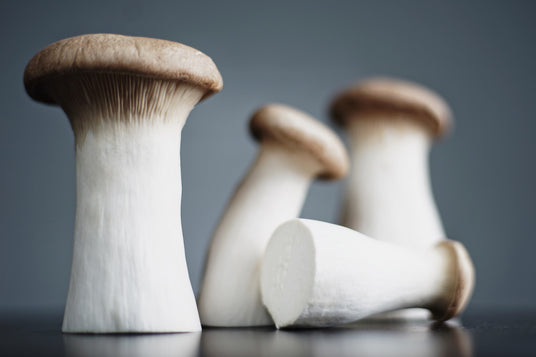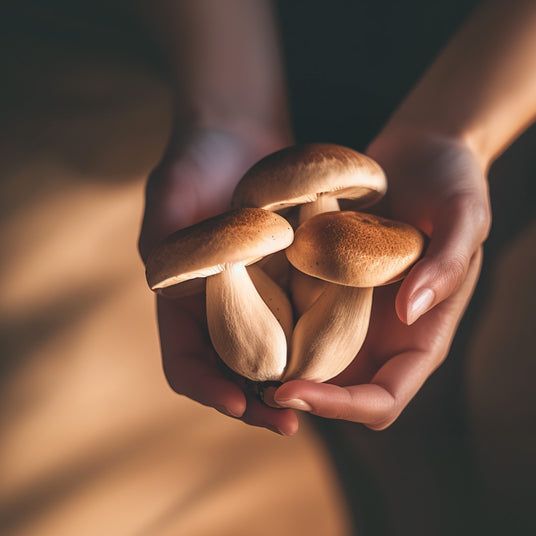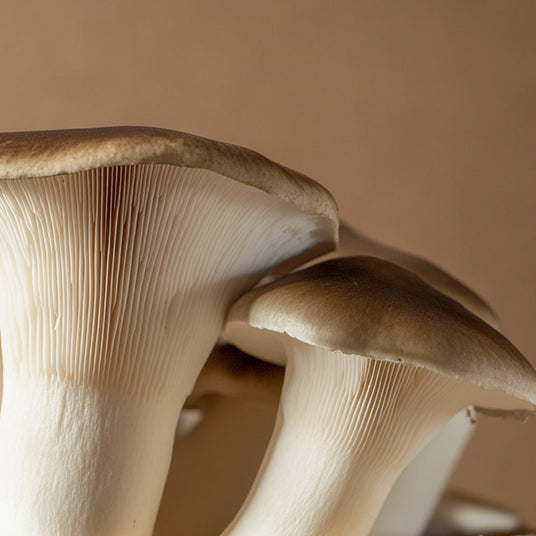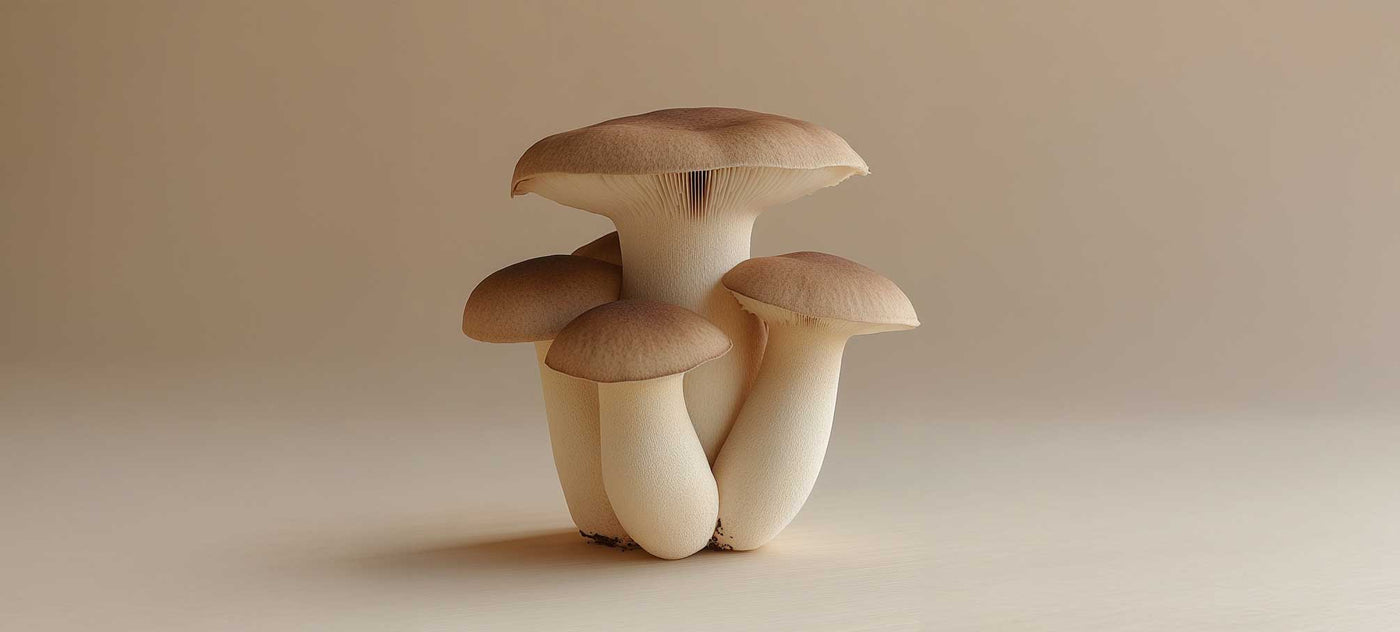
ERYNGII ESSENTIAL NOTES
The oyster mushroom stands out for the amount of active biomolecules it contains, especially β-glucans (modulating polysaccharides). However, it also contains phenolic compounds and ergotioneine.
Culinary and scientific value
Pleurotus eryngii is an edible species found in Western Europe, Central Europe, Central Asia and South-West Russia. In fact, it is one of the two most highly valued species of the genus Pleurotus (along with Pleurotus ostreatus) .
Feed your inner self
Furthermore, as with most basidiomycete fungi used traditionally, researchers studied its composition, highlighting its lignocellulosic enzyme complex. They found a large number of substances, suggesting its usefulness in biotechnological applications. As a result, its cultivation has expanded and many publications have been produced on its role as a nutraceutical.

ERYNGII DOCUMENTATED APPLICATIONS AND USES
Like the Shiitake or the Maitake, the consumption of thistle mushroom has evolved from food use to functional food use. Recently, fungi have been recognized as an excellent source of bioactive substances, in particular Polysaccharides (including base-glucans).
Polypeptide (PEMP)
In fact, the polysaccharides of P. Eryngii They are increasingly attractive for their activity. For example, a polypeptide (PEMP) extracted from Pleurotus eryngii showed An important activity. Although through food, the nutrients of interest of this mushroom can be incorporated, to achieve a greater concentration of them on the body, it is necessary to consume supplements of powder or extract, where higher concentrations of active biomolecules are obtained. The powder of P. Eryngii It can be found, combined with other species, in formulas such as Bio-Defense and Bio-Istintin.
Products with thistle mushroom
-
Bio Intestin (Shiitake, Oyster, Lion’s Mane) capsules
✓ DIGESTIVE REGULARITY ✓ PREBIOTIC
£34.00Unit price /Unavailable -
HIFAS-Microbiota (Lion’s Mane, Oyster, Reishi, Shiitake) capsules
RELIEVES THE HEAVYNESS AND HELP YOUR INTESTINAL BARRIER
From £46.50Unit price /Unavailable -
Bio Defense (Oyster, King Oyster, Lion’s Mane, Reishi and Shiitake powder) capsules
NATURAL IMMUNE DEFENCE
£34.00Unit price /Unavailable

THE CULTIVATION OF MUSHROOMS
It is currently cultivated in Europe, the Middle East and North America, as well as in many parts of Asia. Its cultivation has been undertaken, but on a smaller scale than that of Pleurotus ostreatus. Certainly, the fruitful bodies of P. Eryngii They are easy to grow with high performance and products have a large market due to their good flavor and potential. In recent years, the extraction of polysaccharides from fruitful bodies, mycelium and fermentation broth of edible fungi has become an active research issue to explore its structure and physiological activities. There are many strains of P. Eryngii in the world, which are cultivated widely. The different strains of Eryngii They react differently from the different substrates. It can be easily and successfully cultivated on wheat straw substrates, rice, sawdust, etc.
Nevertheless, The cultivation of ecological substrate of Tojo (ULEX Europeus) It has given great yields. If the production is oriented to the elaboration of supplements, More sophisticated systems are used with controlled environments, organic substrates, etc.
Do you want to know more?
Habitat and distribution
Habitat and distribution
Eryngii mushrooms usually grow in chalky soil, especially where there are remains of wild thistles, which serve as food for their mycelium. They are found in Europe and Asia, but also in some regions of Africa, as they prefer warm environments.
Mycological notes
Mycological notes
This pleurotus shows a morphology similar to P. ostreatus. In this case, the hat ranges from 4 to 10 cm and the predominant color of the cuticle is the brown, which clarifies according to maturation. Instead, its sheets are white Initially and then darken to adopt a cream color. The meat is white, more consistent than in others Pleurotus, pleasant smell and sweet taste.The foot It is one of the most characteristic elements of this species. Is White, without ring and the meat is firm.
The culture in bioreactors
The culture in bioreactors
Maximum quality, purity and power in our production systems
One of the Hifas Research Lines Da Terra more powerful focuses on the continuous improvement of Cultivation of different species in bioreactors (Reishi, Mamena de León, Shiitake and Maitake) using certified ecological substrates, as well as in the standardization of the quality of origin ingredients to guarantee the Excellence in the final product That develops with each fungus.
Hifas Quality System
Through a standard of its own quality, We identify biomolecules and active ingredients, We properly select the strains of fungi that contain them, we use own and specific analytical systems and we apply protocols for Analysis in different production phases. Thanks to this rigorous system we offer natural products, supplements and nutraceutics, with HIFAS QUALITY SYSTEM , making the difference with respect to other products in terms of purity and premium quality.
R&D and thistle mushroom studies
R&D and thistle mushroom studies
- The R&D team at Hifas da Terra conducted a study on optimising the extraction processes of active biomolecules in Pleurotus eryngii to obtain fractions of interest.
Curiosities
Curiosities
- This species appears in the writings of Plinio el Viejo (23-79 d. C.) that provides information on the use and collection of mushrooms that inhabit the thistle roots, Pleurotus eryngii.






















